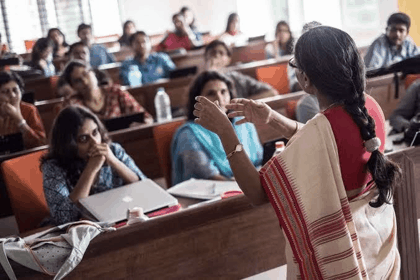February 28th, 2020

It is estimated that over the next 5 years, India’s youth population will continue to increase. This means that the current education system will prove inadequate in accommodating the age group of 18-22. For this reason and those shown below, India will continue to play a dominant role as a source for higher education institutions seeking to increase their international student numbers.
Let’s take a look at some facts:
- Current population of India: 1.3 billion (July 2018 est.)
- Estimated population of India by 2030: 1.5 billion
- Number of Indians who will be in the age group of 18-22 in the 5 years: 3 out of 10
- Number of colleges and universities in India in 2017-19: 39,050 and 903, respectively
- Number of students enrolled in higher education 2017-18: 36.64 million
- Value of India’s education sector in 2018: US $91.7 billion
- Value of India’s education sector in 2019: US $101.1 billion
- Percentage of universities mandated by the government in January 2019 to deliver online degree courses: 15%
- Expected growth of India’s on-line education over the next two years: US $1.96 billion
- Rural internet growth and usage: 566 million people
A few observations:
- Degrees still matter to Indian students more than skills which lead to high number of graduates with low employability.
- Rote learning continues to be a focus of the education policy with emphasis on memorizing facts.
- The country lacks availability of quality vocational training.
- Academic-industry engagement is inadequate and limited to select few institutions.
- Quality education with global exposure is limited and expensive.
- Institutions are having a difficult time keeping up with the growing population and their needs which will result in a largely unemployable youth population holding qualifications that don’t match the needs of the industry.
- Universities don’t provide their students with any career counselling services .
Solutions:
- Make higher education accessible via e-learning opportunities. In India, even the University Grants Commission (UGC) is now recognizing open online courses.
- Vocational education needs the government’s support so that it is at par with conventional courses to help close the gap with mainstream university education.
- Indian universities need to invest more in research and development to have a global standing and recognition which is currently absent.
Sources:

The Academic Credentials Evaluation Institute, Inc. (ACEI), was founded in 1994 and is based in Los Angeles, CA, USA. ACEI provides a number of services that include evaluations of international academic credentials for U.S. educational equivalence, translation, verification, and professional training programs. ACEI is a Charter and Endorsed Member of the Association of International Credential Evaluators. For more information, visit www.acei-global.org.
